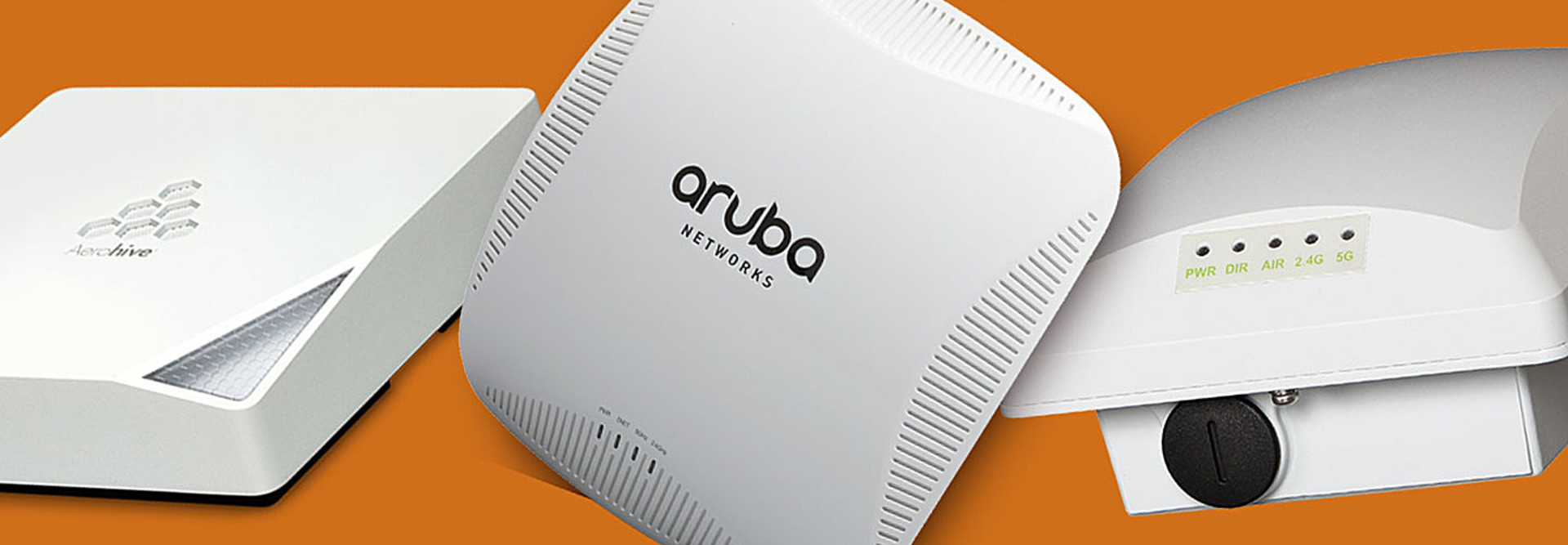5 Wireless Products Businesses Can Use to Optimize and Grow
A startup renaissance has taken hold in the U.S., and many entrepreneurs are beginning their journey at MassChallenge.
Boston-based MassChallenge selects “high-impact startups that are going to change the world,” says Roman Kern, senior director of programs and operations.
Kern knew the accelerator had to offer a state-of-the-art wireless network that wouldn’t let users down when they needed it the most.
“Wi-Fi is critical,” he says. “What people expect to get at MassChallenge in terms of infrastructure is literally a desk, fast Internet and, I would say, coffee — so fast Internet is one of three things.”
MassChallenge saw an opportunity to start over with its wireless network during its recent move into a new headquarters. The organization chose tools that not only upgraded previous infrastructure, but also accommodate peak demand periods and a shortage of IT staff.
As more enterprise hardware operates wirelessly, and more consumers expect wireless access, businesses are updating networks. What tools and solutions are in demand?
Percentage of Americans who now own a smartphone, up from 35% in 2011
SOURCE: Pew Research Center, “U.S. Smartphone Use in 2015,” April 2015
1. Aerohive AP330 Wireless Access Point
User: MassChallenge
Paint Point: How can we offer an agile network to meet peak demands?
MassChallenge hosts 128 startups at a time and has about 250 to 320 users accessing its network. But on pitch nights, large crowds would overwhelm the network.
“When you have a pitch night, it’s cool to do live voting,” Kern says. “People rely on Wi-Fi, and we were not able to guarantee that they would be able to connect to our network.”
The Solution: High-density hardware
The organization’s 26,000-square-foot space in Boston’s Seaport District faces “a ton of potential interference” from neighboring wireless users, Kern says, making it challenging to guarantee a good experience. “We want to give these startups access to resources they need.”
To meet its everyday challenges — as well as peak demand periods —MassChallenge deployed the triple-stream Aerohive AP330 APs, designed for high-capacity enterprise environments.
2. HiveManager Network Management System
User: MassChallenge
Pain Point: How can we compensate for a lack of IT staff?
“There is no person on the team with IT capabilities,” Kern says. “With our old network, we had old-school switches. You had to locally log in to every single box to figure out what was going on. We didn’t have someone on the team who could even do something about it.”
The Solution: Intuitive network management
Aerohive’s cloud-based HiveManager Network Management System allows Kern to monitor the health of his network from anywhere. “I can be traveling, and I can log in to my HiveManager, and see exactly what’s going on,” he says.
HiveManager also simplified network setup, Kern says. “There’s no need to manually set up access points and switches. All I have to do is unpack the equipment, connect them and they automatically pull the configuration from the cloud.”
3. Aruba AirWave Network Management System
User: Neiman Marcus
Pain Point: How do we manage wireless networks across different locations?
Several years ago, retailer Neiman Marcus decided it was ready for a full-scale wireless deployment. Previously, only a few store systems used Wi-Fi, and there was no guest wireless network.
“As mobile exploded, we saw that we needed to modernize that network, because we were going to have an avalanche of new clients who needed to communicate,” says Scott Emmons, enterprise architect for information services at Neiman Marcus.
Expanding the network meant more things to manage, however. “I don’t have a Wi-Fi technician in every store,” Emmons says. “We needed a strong tool from the central location that allowed us to quickly respond when that network needed attention, and stay ahead of problems.”
The Solution: Centralized visibility
Neiman Marcus uses Aruba’s Airwave Network Management System to monitor its wireless network at stores. “Airwave is a single-pane-of-glass view of the network,” Emmons says. “I can see all of my hardware assets.”
“If a user calls and says, ‘I’m having a problem at a specific location,’ we can see the history of the device,” Emmons says. “It gives us a great tool for monitoring health, and also data we need when we’re trying to troubleshoot a problem.”
4. Aruba Networks AP-215
User: Kelsey-Seybold Clinic
Pain Point: How can we keep up with an evolving wireless environment?
The Kelsey-Seybold Clinic, a multi-specialty healthcare clinic in the Greater Houston area, uses its wireless network for business operations and healthcare services. While the network mostly performed well, Martin Littmann, chief technology officer and chief information security officer for the clinic, wanted to ensure that it would hold up under increasing demand.
“I see the world going more and more mobile,” Littmann says. “We try to get ahead of the curve.”
The Solution: Next-generation wireless
The clinic is adding 150 802.11ac capable APs (the Aruba AP-215) to go along with approximately 250 existing 802.11n APs.
The technology gives the clinic faster connection speeds for newer devices and beefs up network performance.
“It’s making old functionality better,” Littmann says. “Before, we would occasionally say, ‘Wireless is being flaky,’ but I haven’t encountered that kind of a conversation in the last six months.”
He praises Aruba’s ClientMatch feature, which prevents devices from sticking to a particular AP and instead matches them with other APs nearby that can accommodate additional traffic.
“My tech guys are as critical as anyone about our technology,” Littmann says. “They’ll move from an office into the hall, back and forth, and never lose a signal thanks to that technology.”
5. Ruckus ZoneFlex T300 Series Outdoor 802.11ac AP
User: Marriott Grand Hotel Resort, Golf Club & Spa
Pain Point: How can we meet increasing customer demands?
Until recently, the Marriott Grand Hotel in Mobile, Ala., operated a mix of wireless networking components, says Sean Miller, IT director for PCH Hotels & Resorts, which owns the Mobile hotel and several other properties. He says the infrastructure remained from a time when notebooks were the only devices that required a wireless connection.
“Now, if you have a family of four, they probably want to connect 10 devices,” Miller says.
Guests also expect to connect their devices to the network from anywhere onsite, including poolside.
The Solution: Outdoor APs
Before the upgrade, the Marriott Grand Hotel deployed only a single AP outdoors, which covered about 60 percent of the pool area. As part of an update that included new in-wall APs, the hotel installed three Ruckus outdoor 802.11ac-capable APs, achieving 100 percent coverage.
“When guests move from the restaurant to the pool and the outdoor areas, it works everywhere,” Miller says.









